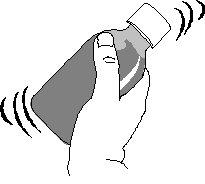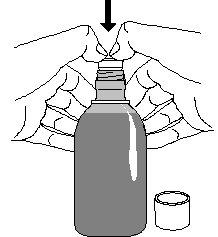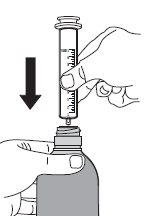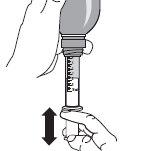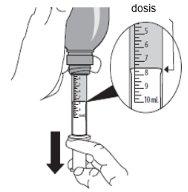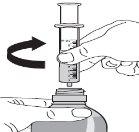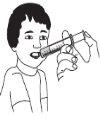
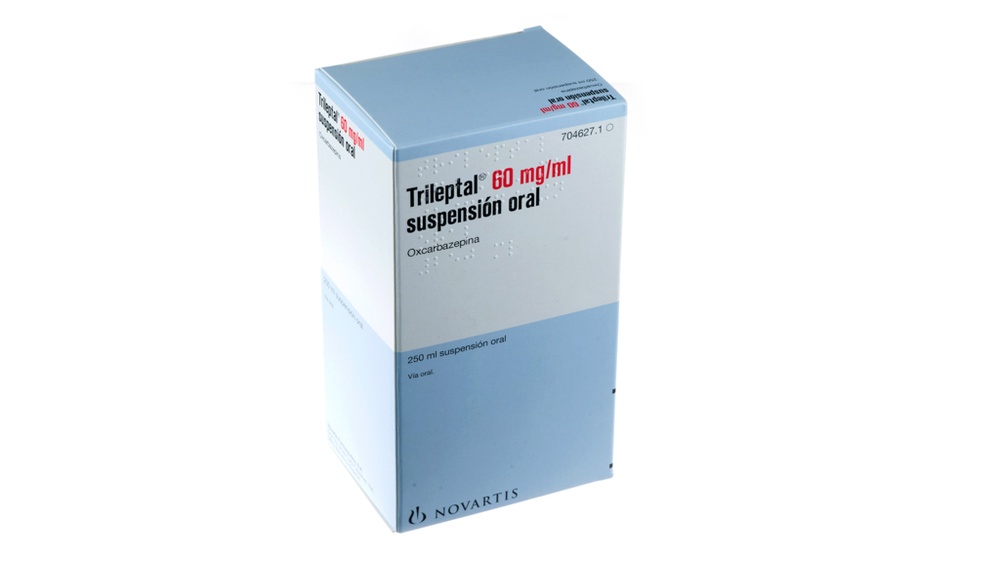
ТРІЛЕПТАЛ 60 мг/мл ОРАЛЬНА СУСПЕНЗІЯ

Запитайте лікаря про рецепт на ТРІЛЕПТАЛ 60 мг/мл ОРАЛЬНА СУСПЕНЗІЯ

Інструкція із застосування ТРІЛЕПТАЛ 60 мг/мл ОРАЛЬНА СУСПЕНЗІЯ
Введення
Опис: інформація для користувача
Трилепталь 60 мг/мл суспензія для перорального прийому
окскарбазепін
Всією увагою прочитайте цей опис перед тим, як почати приймати цей лікарський засіб, оскільки він містить важливу інформацію для вас.
- Збережіть цей опис, оскільки вам може знадобитися знову його прочитати.
- Якщо у вас є якісь питання, проконсультуйтеся з вашим лікарем або фармацевтом.
- Цей лікарський засіб призначений тільки вам, і не давайте його іншим людям, навіть якщо вони мають такі самі симптоми, як у вас, оскільки це може їм нашкодити.
- Якщо ви відчуваєте побічні ефекти, проконсультуйтеся з вашим лікарем або фармацевтом, навіть якщо це побічні ефекти, які не вказані в цьому описі. Див. розділ 4.
Зміст опису
- Що таке Трилепталь і для чого він використовується
- Що потрібно знати перед тим, як почати приймати Трилепталь
- Як приймати Трилепталь
- Можливі побічні ефекти
- Збереження Трилепталю
- Зміст упаковки та додаткова інформація
1. Що таке Трилепталь і для чого він використовується
Що таке Трилепталь
Трилепталь містить активну речовину окскарбазепін.
Трилепталь належить до групи лікарських засобів, які називаються антиконвульсантами або антиепілептичними засобами.
Для чого використовується Трилепталь
Лікарські засоби, такі як Трилепталь, є стандартним лікуванням епілепсії.
Епілепсія - це порушення роботи мозку, яке викликає у людей повторювані кризи та судоми. Кризи відбуваються через тимчасову відмову електричної активності мозку. Зазвичай клітини мозку координують рухи тіла, надсилаючи сигнали через нерви м'язів у певному порядку. При епілепсії клітини мозку надсилають занадто багато сигналів безладно. Результатом може бути м'язова активність, яка не координується, і яку називають епілептичною кризою.
Трилепталь використовується для лікування епілептичних кризів часткової локалізації з або без вторинної генералізації з тоніко-клонічними кризами. Часткові кризи охоплюють обмежену ділянку мозку, але можуть поширитися на весь мозок і викликати тоніко-клонічні кризи. Існують 2 типи часткових кризів: прості та складні. При простих часткових кризах пацієнт залишається свідомим, тоді як при складних кризах стан свідомості порушується.
Трилепталь діє, підтримуючи нервові клітини "гіперекситовані" мозку під контролем, пригнічуючи або зменшуючи частоту таких кризів.
Трилепталь можна використовувати самостійно або в поєднанні з іншими антиепілептичними засобами.
Зазвичай лікар намагається знайти лікарський засіб, який найкраще підходить вам або вашому дитині. Однак при важких епілепсіях може знадобитися поєднання двох або більше лікарських засобів для контролю кризів. Трилепталь показаний для використання у дорослих та дітей віком 6 років і старших.
Якщо у вас є якісь питання щодо того, як діє Трилепталь або чому вам призначений цей лікарський засіб, проконсультуйтеся з вашим лікарем.
2. Що потрібно знати перед тим, як почати приймати Трилепталь
Слідуйте точно інструкціям щодо прийому цього лікарського засобу, які вказані вашим лікарем або фармацевтом. У разі сумнівів проконсультуйтеся знову з вашим лікарем або фармацевтом.
Моніторинг під час лікування Трилепталом
Перед і під час лікування Трилепталом ваш лікар може призначити аналіз крові для визначення вашої дози. Ваш лікар вкаже, коли потрібно проводити аналізи.
Не приймайте Трилепталь:
- якщо ви алергічні на окскарбазепін або на будь-який інший компонент цього лікарського засобу (включаючи розділ 6) або якщо ви алергічні на еслікарбазепін.
Якщо ви алергічні, повідомте про це вашому лікареві перед тим, як приймати Трилепталь. Якщо ви думаєте, що можете бути алергічними, проконсультуйтеся з вашим лікарем.
Попередження та застереження
Проконсультуйтеся з вашим лікарем або фармацевтом перед тим, як почати приймати Трилепталь:
- якщо ви коли-небудь мали якусь алергічну реакцію(ерупцію або будь-який інший тип алергії) на карбамазепін або будь-який інший лікарський засіб. Якщо ви алергічні на карбамазепін, ймовірність того, що ви будете алергічними на окскарбазепін (Трилепталь), становить 1 з 4 (25%).
- якщо ви страждаєте на хворобу нирок.
- якщо ви страждаєте на важку хворобу печінки.
- якщо ви приймаєте діуретики(лікарські засоби, які допомагають ниркам виводити солі та воду, збільшуючи кількість сечі).
- якщо ви страждаєте на хворобу серця, коротке дихання та/або запалення ніг, викликане затримкою рідини.
- якщо ваш рівень натрію в крові низький, як показує аналіз крові (див. розділ 4).
- якщо ви жінка, яка приймає оральні контрацептиви(наприклад, таблетки), Трилепталь може зробити контрацептив неефективним. Використовуйте інший метод контрацепції, який не містить гормонів, або додатковий метод під час прийому Трилепталю. Це може допомогти запобігти нежаданому вагітності. Повідомте про це вашому лікареві негайно, якщо у вас є нерегулярні або плямисті вагінальні кровотечі. Якщо у вас є якісь питання щодо цього, проконсультуйтеся з вашим лікарем або фармацевтом перед тим, як приймати Трилепталь.
Ризик важких шкірних реакцій у пацієнтів ханського або тайського походження, пов'язаних з карбамазепіном або хімічно спорідненими сполуками, можна передбачити за допомогою аналізу крові цих пацієнтів. Ваш лікар порадить, чи потрібно проводити аналіз крові перед тим, як приймати окскарбазепін.
Якщо ви помітите будь-які з наступних симптомів після прийому Трилепталю, негайно повідомте про це вашому лікареві або зверніться до відділу невідкладної допомоги найближчої лікарні:
- якщо під час лікування ви переживаєте алергічну реакцію. Симптоми включають запалення губ, повік, обличчя, горла, рота або раптові проблеми з диханням, лихоманку з запаленням лімфатичних вузлів, висипку або пухирці на шкірі.
- якщо ви помітите симптоми, які свідчать про гепатит, такі як жовтяниця (жовте забарвлення шкіри або білка очей).
- якщо ви помітите збільшення частоти кризів. Це особливо важливо у дітей, але також може трапитися у дорослих.
- якщо ви помітите можливі симптоми порушення крові, такі як втома, коротке дихання під час виконання фізичних вправ, блідість, головний біль, озноб, головокружіння, часті інфекції з лихоманкою, біль у горлі, виразки у роті, кровотечі або синяки частіше, ніж зазвичай, носові кровотечі, червоні або фіолетові плями на шкірі.
- більшість людей, які приймають антиепілептичні засоби, такі як Трилепталь, мали думки про самопошкодження або самогубство. Якщо ви будь-коли переживаєте ці думки, негайно зв'яжіться з вашим лікарем.
- якщо ви помітите, що ваш серцевий ритм швидкий або незвичайно повільний.
- Діти та підлітки
Для лікування дітей лікар може порекоменувати моніторинг функції щитової залози перед і під час лікування.
Використання Трилепталю з іншими лікарськими засобами:
Повідомте про це вашому лікареві або фармацевту, якщо ви приймаєте, нещодавно приймали або можете приймати будь-який інший лікарський засіб.
Особливо у випадку:
- Оральних контрацептивів, таких як "пігулки" (див. розділ Попередження та застереження).
- Інших антиепілептичних засобів та індукторів ферментів, таких як карбамазепін, фенобарбітал, фенітоїн або ламотріджин та рифампіцин.
- Лікарських засобів, які знижують рівень натрію в крові, таких як діуретики (використовуються для допомоги ниркам виводити солі та воду, збільшуючи вироблення сечі), десмопресин, та нестероїдні протизапальні засоби, такі як індометацин.
- Літію та інгібіторів моноамінооксидази (лікарських засобів, які використовуються для лікування порушень настрою та деяких типів депресії).
- Лікарських засобів, які контролюють імунну систему організму, таких як циклоспорин та такролімус.
Прийом Трилепталю з їжею та алкоголем
Трилепталь можна приймати з або без їжі. Під час лікування Трилепталом уникайте прийому алкогольних напоїв, оскільки це може збільшити седативний ефект цього лікарського засобу; у разі сумнівів проконсультуйтеся з вашим лікарем.
Вагітність та лактація
Вагітність
Якщо ви вагітні, думаєте, що можете бути вагітні або плануєте вагітність, проконсультуйтеся з вашим лікарем або фармацевтом перед тим, як використовувати цей лікарський засіб.
Важливо контролювати епілептичні кризи під час вагітності. Однак може бути ризик для вашої дитини, якщо ви приймаєте антиепілептичні засоби під час вагітності.
Вроджені вади розвитку
Дослідження не показали збільшення ризику вроджених вад розвитку, пов'язаного з окскарбазепіном, прийнятим під час вагітності, однак не можна повністю виключити ризик вроджених вад розвитку плода.
Порушення нейрологічного розвитку
Деякі дослідження показали, що вплив окскарбазепіну на плід під час вагітності негативно впливає на розвиток функції мозку (нейрологічний розвиток) у дітей, тоді як інші дослідження не показали цього ефекту. Можливість того, що є вплив на нейрологічний розвиток, не можна виключити.
Ваш лікар повідомить вам про користь та можливі ризики лікування та допоможе вам вирішити, чи потрібно приймати Трилепталь.
Не переривайте лікування Трилепталом під час вагітності без попередньої консультації з вашим лікарем.
Лактація
Якщо ви приймаєте цей лікарський засіб, проконсультуйтеся з вашим лікарем перед тим, як почати годування грудьми. Активна речовина Трилепталю потрапляє до молока матері. Хоча дані свідчать про те, що кількість Трилепталю, яка потрапляє до дитини під час годування грудьми, низька, ризик побічних ефектів у дитини не можна виключити. Ваш лікар повідомить вам про користь та потенційні ризики годування грудьми під час лікування Трилепталом. Якщо ви годуєте грудьми під час лікування Трилепталом і вважаєте, що ваша дитина має побічні ефекти, такі як надмірна сонливість або недостатній приріст ваги, негайно повідомте про це вашому лікареві.
Водіння транспортних засобів та використання машин
Трилепталь може викликати симптоми, такі як сонливість, головокружіння або порушення зору, та знижувати реакцію. Ці ефекти, а також сама хвороба, можуть ускладнити вашу здатність водити транспортні засоби або використовувати машини. Тому не водьте, не використовуйте машини та не займаєтеся іншими діяльностями, які вимагають особливої уваги, поки ваш лікар не оцінить вашу реакцію на цей лікарський засіб.
Важливо проконсультуватися з вашим лікарем, якщо ви можете водити транспортні засоби або використовувати машини під час прийому цього лікарського засобу.
Трилепталь містить сорбітол (Е420), пропіленгліколь (Е1520), пара-гідроксібензоати, натрій та етанол
Трилепталь суспензія для перорального прийому містить:
- Сорбітол (Е420): цей лікарський засіб містить 175 мг сорбітолу в кожному 1 мл суспензії для перорального прийому.
Сорбітол є джерелом фруктози. Якщо ваш лікар вказав вам (або вашій дитині), що ви страждаєте на непереносимість певних цукрів, або у вас діагностована вроджена непереносимість фруктози (ВНФ), рідка генетична хвороба, при якій пацієнт не може розщеплювати фруктозу, проконсультуйтеся з вашим лікарем перед тим, як приймати цей лікарський засіб.
Сорбітол може викликати незручності в шлунково-кишковому тракті та легкий проносний ефект.
- Пропіленгліколь (Е1520): цей лікарський засіб містить 25 мг пропіленгліколю в кожному 1 мл суспензії для перорального прийому.
- Пара-гідроксібензоати: пара-гідроксібензоат пропілу (Е216) та пара-гідроксібензоат метилу (Е218), які можуть викликати алергічні реакції (можливо, затримані).
- Натрій: цей лікарський засіб містить менше 1 ммоль натрію (23 мг) на 1 мл; тобто, він практично "не містить натрію".
- Етанол: цей лікарський засіб містить 0,8 мг алкоголю (етанолу) в кожному 1 мл суспензії для перорального прийому. Кількість в 1 мл цього лікарського засобу еквівалентна менше 0,02 мл пива або 0,01 мл вина. Незначна кількість алкоголю, яка міститься в цьому лікарському засобі, не викликає жодного помітного ефекту.
3. Як приймати Трилепталь
Слідуйте точно інструкціям щодо прийому цього лікарського засобу, які вказані вашим лікарем або фармацевтом. У разі сумнівів проконсультуйтеся знову з вашим лікарем або фармацевтом.
Доза повинна бути вказана в мілілітрах (мл)
Доза, яку призначить ваш лікар, повинна бути вказана в мілілітрах (мл)і не в міліграмах (мг). Це важливо, оскільки оральна дозувальна джерела, яка використовується для видалення правильної дози з флакону, позначена в мілілітрах. Якщо ваш рецепт вказаний в міліграмах, не приймайте лікарський засіб і проконсультуйтеся з вашим лікарем або фармацевтом якомога скоріше.
Як приймати
Використання у дорослих
- Рекомендована дозадля дорослих (включаючи пацієнтів похилого віку) становить 10 мл суспензії для перорального прийому (600 мг окскарбазепіну) на добу.
- Прійміть дозу 5 мл суспензії для перорального прийому (300 мг окскарбазепіну) двічі на добу.
- Ваш лікар може поступово збільшувати цю дозу, щоб отримати найкращу дозу для вас. Найкращі результати зазвичай спостерігаються при дозах між 10 мл і 40 мл суспензії для перорального прийому (від 600 мг окскарбазепіну до 2400 мг окскарбазепіну) на добу.
- Доза залишається такою самою, якщо Трилепталь приймається разом з іншим антиепілептичним засобом.
- Якщо у вас є проблеми з нирками (ниркова недостатність), початкова доза становить половину від звичайної початкової дози.
- Якщо у вас є важка хвороба печінки, ваш лікар коригуватиме дозу.
Використання у дітей та підлітків
Трилепталь можна використовувати у дітей віком 6 років і старших.
Рекомендована доза для дітей обчислюється лікарем і залежить від ваги дитини.
- Початкова доза становить 8-10 міліграмів на кілограм ваги на добу, яку приймають у двох дозах. Наприклад, дитина вагою 30 кг починає лікування з дози 150 мг (2,5 мл суспензії для перорального прийому) двічі на добу.
- Ваш лікар може поступово збільшувати дозу, щоб отримати найкращу дозу для дитини. Найкращі результати зазвичай спостерігаються при дозі 30 міліграмів на кілограм ваги на добу. Максимальна доза для дитини становить 46 міліграмів на кілограм ваги на добу.
Як приймати Трилепталь
Для повної інформації щодо прийому Трилепталю див. розділ Інструкції з використанняв кінці цього опису.
Коли та протягом якого часу приймати Трилепталь
Прійміть Трилепталь двічі на добу кожний день, приблизно о同じній годині дня, якщо ваш лікар не вказав інше. Це матиме найкращий ефект для контролю епілепсії. Це також допоможе вам пам'ятати, коли приймати суспензію для перорального прийому.
Ваш лікар повідомить вам, скільки часу триватиме ваше лікування або лікування вашої дитини. Тривалість лікування залежатиме від типу кризів, які переживаєте ви або ваша дитина. Можливо, буде потрібно продовжувати лікування протягом кількох років для контролю епілептичних кризів. Не змінюйте дозу та не переривайте лікування без попередньої консультації з вашим лікарем.
Якщо ви прийняли більше Трилепталю, ніж потрібно
У разі передозування або випадкового прийому проконсультуйтеся негайно з вашим лікарем або фармацевтом або зверніться до служби токсикологічної інформації, телефон: 91 562 04 20, вказавши лікарський засіб та кількість, прийняту. Симптоми передозування Трилепталом можуть включати:
- сонливість, головокружіння, проблеми з координацією та/або рухами очей, м'язові скорочення або значне погіршення судом, головний біль, втрату свідомості, кому,
- нудоту, блювоту, збільшення неконтрольованих рухів,
- замороження, двоїння зору, зменшення розміру або скорочення зіниці (пупіли), розмитість зору,
- втома,
- коротке дихання, поверхневе та швидке (гіпоventиляція),
- нерегулярний серцевий ритм (продовження інтервалу QTc),
- тремор, головний біль, кома, порушення свідомості, неконтрольовані рухи рота, язика та кінцівок,
- агресія, агітація, сплутаність,
- низький кров'яний тиск,
- зважність дихання.
Якщо ви забули прийняти Трилепталь
Якщо ви забули прийняти дозу, прийміть її якомога скоріше, крім випадків, коли вже майже час наступної дози; в цьому випадку чекайте та поверніться до звичайного графіку прийому. Не приймайте подвійну дозу для компенсації забутих доз.
Якщо ви не впевнені або забули кілька доз, проконсультуйтеся з вашим лікарем.
Якщо ви перериваєте лікування Трилепталом
Не переривайте прийом лікарського засобу без попередньої консультації з вашим лікарем.
Для запобігання раптовому погіршенню кризів не переривайте лікування різко.
Якщо ви перериваєте лікування, це повинно бути зроблено поступово, як вказав ваш лікар.
Якщо у вас є якісь інші питання щодо використання цього лікарського засобу, проконсультуйтеся з вашим лікарем або фармацевтом.
4. Можливі побічні ефекти
Як і всі ліки, цей препарат може викликати побічні ефекти, хоча не всі люди їх відчувають.
Повідомте своєму лікареві негайно або зверніться до відділення невідкладної допомоги найближчої лікарні, якщо у вас з'явиться будь-який з наступних побічних ефектів:
Наступні є симптомами потенційно серйозних побічних ефектів, які можуть потребувати термінової медичної допомоги.
Ваш лікар вирішить, чи потрібно негайно припинити лікування Трілепталом і як продовжувати лікування в майбутньому.
Нечасто(можуть торкнутися до 1 з 100 пацієнтів):
- Збільшення ваги, втома, випадіння волосся, м'язова слабкість, відчуття холоду (ознаки зниження діяльності щитоподібної залози).
- Падіння
Рідко(можуть торкнутися до 1 з 1000 пацієнтів):
- Воспалення губ, повік, обличчя, горла або рота, супроводжуване труднощами дихання, мовлення або ковтання (ознаки анафілактичних реакцій і ангіоневротичного набухання).
- Висип, лихеноїдний висип та/або гарячка, які можуть бути проявами синдрому ДРЕС (дифузний еозинофільний синдром з лімфоцитозом) або гострого пустульозного висипу.
- Втома, задишка під час фізичних вправ, блідість, головний біль, озноб, головокружіння, часті інфекції з гарячкою, біль у горлі, виразки у роті, кровотечі або синяки частіше, ніж зазвичай, носові кровотечі, червоні або фіолетові плями на шкірі (ознаки зниження кількості тромбоцитів або зниження кількості кров'яних клітин).
- Оніміння, сплутаність свідомості, м'язові скорочення або значне погіршення судом (можливі симптоми низького рівня натрію в крові через недостатню секрецію антидіуретичного гормону (АДГ)) (див. розділ "Попередження та обережність").
Дуже рідко(можуть торкнутися до 1 з 10000 пацієнтів):
- Ознаки гіперчутливості (алергії), такі як висип, гарячка та біль у м'язах та суглобах.
- Тяжкі бульбусні виразки на шкірі та/або слизових оболонках губ, очей, рота, носових проходів або геніталій (ознаки важкої алергічної реакції, включаючи синдром Стівенса-Джонсона та еритему багатоклітинного).
- Висип з червоними плямами переважно на обличчі, який може супроводжуватися втомою, гарячкою, відчуттям нудоти (нудоти), або втратою апетиту (ознаки системного червоного вовчака).
- Симптоми, подібні до грипу, з жовтяницею (жовтим забарвленням шкіри та білого очного яблука) (ознаки гепатиту).
- Тяжкий біль у верхній частині живота (абдомінальний), нудота (воміт), втрата апетиту (ознаки панкреатиту).
Повідомте своєму лікареві якнайшвидше, якщо ви відчуваєте будь-який з наступних побічних ефектів.Вони можуть потребувати медичної уваги:
Часто(можуть торкнутися до 1 з 10 пацієнтів):
- Тремор, порушення координації, мимовільні рухи очей, тривога та нервозність, депресія, зміни настрою, висип.
Дуже рідко(можуть торкнутися до 1 з 10000 пацієнтів):
- Нерегулярний серцевий ритм або дуже швидкий чи повільний серцевий ритм.
Інші побічні ефекти, які можуть виникнути:
Це легкі та помірні побічні ефекти Трілепталу. Більшість цих ефектів тимчасові та зазвичай зменшуються з часом.
Дуже часто(можуть торкнутися більш ніж 1 з 10 пацієнтів):
- Втома, головний біль, головокружіння, сонливість, відчуття нудоти (нудоти), блювота та подвійне бачення.
Часто(можуть торкнутися до 1 з 10 пацієнтів):
- Слабкість, порушення пам'яті, труднощі з концентрацією уваги, апатія, агітація, сплутаність свідомості, розмитість зору, запор, діарея, біль у верхній частині живота (абдомінальний), акне, випадіння волосся, вертіго, збільшення ваги, порушення мови.
Нечасто(можуть торкнутися до 1 з 100 пацієнтів):
- Високий кров'яний тиск (гіпертонія), кропив'янка.
- Також можуть збільшитися рівні печінкових ферментів під час прийому Трілепталу.
Рідко(можуть торкнутися до 1 з 1000 пацієнтів):
- Відомі випадки захворювань кісток, включаючи остеопенію та остеопороз (зниження мінеральної щільності кісток) та переломи. Повідомте своєму лікареві або фармацевту, якщо ви приймаєте антиепілептичні препарати тривалий час, маєте медичну історію остеопорозу або приймаєте стероїди.
Звіт про побічні ефекти
Якщо ви відчуваєте будь-який побічний ефект, проконсультуйтеся з лікарем або фармацевтом, навіть якщо це можливі побічні ефекти, які не наведені в цій брошурі. Ви також можете повідомити про них безпосередньо через систему фармаковігілансу України.
5. Зберігання Трілепталу
Тримайте цей препарат поза зоною досяжності дітей.
Не використовуйте цей препарат після закінчення терміну придатності, вказаного на упаковці. Термін придатності - останній день місяця, який вказано.
Після відкриття упаковки використовуйте її протягом наступних 7 тижнів.
Після 7 тижнів поверніть не використану суспензію до аптеки для безпечного знищення.
Не використовуйте цей препарат, якщо ви помітили, що упаковка пошкоджена або має ознаки порушення.
Ліки не повинні викидатися у водопровід або сміття. Відкладайте упаковки та ліки, які вам не потрібні, до спеціального пункту збору в аптеці. У разі сумнівів запитайте у фармацевта, як позбутися упаковок та ліків, які вам не потрібні. Таким чином, ви допоможете захистити навколишнє середовище.
6. Зміст упаковки та додаткова інформація
Склад Трілепталу
- Активний інгредієнт - окскарбазепін. Кожен мл суспензії містить 60 мг окскарбазепіну.
- Інші компоненти (експіцієнти) - очищена вода, сорбітол (Е420) 70% (не кристалізований), пропіленгліколь (Е1520), дисперсна целюлоза, аскорбінова кислота (Е300), лимонно-персиковий ароматизатор (містить етанол), метилпарабен (Е218), макроголевий стеарат 400, сорбінова кислота (Е200), содій сакхарин, пропілпарабен (Е216).
Вигляд продукту та вміст упаковки
Трілептал суспензія випускається у вигляді білувато-коричневої суспензії. Зміна кольору суспензії на легкий коричневий не впливає на якість продукту.
Трілептал суспензія випускається у скляних флаконах темно-коричневого кольору, які містять 250 мл суспензії. Флакони оснащені кришкою безпеки для дітей, дозувальною піпеткою об'ємом 10 мл та адаптером для флакона під тиском.
Власник реєстраційного посвідчення та виробник
Новартіс Фармацевтика, С.А.
Гран Віа де лес Кортс Каталанес, 764
08013 Барселона
Іспанія
Виробник
Новартіс Фарма ГмбХ
Ронштрасе 25 (Нюрнберг)
Д-90429 – Німеччина
Новартіс Фарма ГмбХ
Софі-Герман-Штрасе 10
Нюрнберг 90443
Німеччина
Новартіс Фармацевтика, С.А.Гран Віа де лес Кортс Каталанес, 764,08013 БарселонаІспанія
Цей препарат зареєстрований в країнах-членах Європейського економічного простору та у Великій Британії (Північній Ірландії) під наступними назвами:
Австрія: Трілептал
Бельгія: Трілептал
Хорватія: Трілептал
Данія: Трілептал
Фінляндія: Трілептал
Франція: Трілептал
Німеччина: Трілептал
Греція: Трілептал
Ісландія: Трілептал
Ірландія: Трілептал
Нідерланди: Трілептал
Португалія: Трілептал
Іспанія: Трілептал
Швеція: Трілептал
Велика Британія (Північна Ірландія): Трілептал
Дата останнього перегляду цієї брошури:Березень 2023
Детальна інформація про цей препарат доступна на сайті Державної служби України з лікарських засобів http://www.dls.gov.ua/
_____________________________________________________________________________
Сторінка 1
ІНСТРУКЦІЇ З ДОЗУВАННЯ
Будь ласка, прочитайте ці інструкції, щоб знати, як використовувати цей препарат
Як використовувати набір для лікарського засобу
Набір для лікарського засобу складається з трьох частин


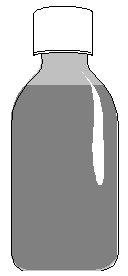
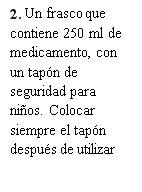
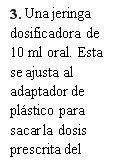

Сторінка 2
Як встановити пластиковий адаптер на новий флакон з лікарським засобом
|
Примітка:Збережіть кришку поруч, щоб закрити флакон після кожного використання |
|
Примітка:Можливо, ви не зможете натиснути адаптер вниз до самого дна, але він повністю ввійде у флакон, коли ви знову закрутите кришку. Будь ласка, слідуйте всім інструкціям для видачі дози в Приготування дози лікарського засобу. |
Сторінка 3
Приготування дози лікарського засобу
| Ви можете приймати лікарський засіб безпосередньо з піпетки або змішувати його у невеликому склянці з водою перед прийомом.
|
|
|
|
|
|
Примітка: якщо призначена доза перевищує 10 мл, видаліть призначену дозу в два етапи. Спочатку наповніть піпетку до позначки 10 мл, а потім знову наповніть піпетку до повної дози. Зверніться до фармацевта, якщо ви не впевнені. |
|
|
|
|

Скільки коштує ТРІЛЕПТАЛ 60 мг/мл ОРАЛЬНА СУСПЕНЗІЯ в Іспанії у 2025 році?
ТРІЛЕПТАЛ 60 мг/мл ОРАЛЬНА СУСПЕНЗІЯ коштує в середньому 11.04 євро у грудень, 2025 році. Ціна може змінюватися залежно від регіону, аптеки та наявності рецепта. Рекомендуємо перевіряти актуальну вартість у місцевих аптеках або через онлайн-сервіси.
- Країна реєстрації
- Середня ціна в аптеках11.04 EUR
- Діючі речовини
- Потрібен рецептТак
- Виробник
- Інформація є довідковою і не є медичною порадою. Перед прийомом будь-яких препаратів обов'язково проконсультуйтеся з лікарем. Oladoctor не несе відповідальності за медичні рішення, прийняті на основі цього контенту.
- Альтернативи до ТРІЛЕПТАЛ 60 мг/мл ОРАЛЬНА СУСПЕНЗІЯФорма випуску: ТАБЛЕТКА, 300 мгДіючі речовини: oxcarbazepineВиробник: Laboratorios Cinfa S.A.Потрібен рецептФорма випуску: ТАБЛЕТКА, 600 мгДіючі речовини: oxcarbazepineВиробник: Laboratorios Cinfa S.A.Потрібен рецептФорма випуску: ТАБЛЕТКА, 300 мгДіючі речовини: oxcarbazepineВиробник: Laboratorios Normon S.A.Потрібен рецепт
Аналоги ТРІЛЕПТАЛ 60 мг/мл ОРАЛЬНА СУСПЕНЗІЯ в інших країнах
Найкращі аналоги з тією самою діючою речовиною та терапевтичним ефектом.
Аналог ТРІЛЕПТАЛ 60 мг/мл ОРАЛЬНА СУСПЕНЗІЯ у Польща
Аналог ТРІЛЕПТАЛ 60 мг/мл ОРАЛЬНА СУСПЕНЗІЯ у Україна
Лікарі онлайн щодо ТРІЛЕПТАЛ 60 мг/мл ОРАЛЬНА СУСПЕНЗІЯ
Консультація щодо дозування, побічних ефектів, взаємодій, протипоказань та поновлення рецепта на ТРІЛЕПТАЛ 60 мг/мл ОРАЛЬНА СУСПЕНЗІЯ – за рішенням лікаря та згідно з місцевими правилами.




